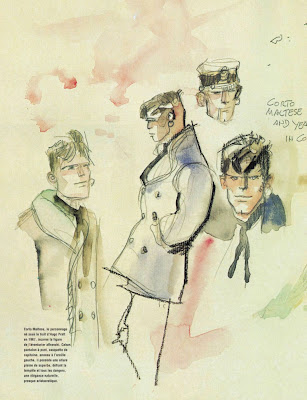The article lacks any depth or insight into why British TV has such a paucity of anime, save for the quote from Emily Man from Orbital Comics, who says "The UK censorship laws have made it extremely hard for the networks in the UK to show Japanese anime on TV too, our societies' tastes and cultural history are different." This is definitely a truism, but the "cultural history" that has disconnected some adults from appreciating animation, including anime (remember one hell of a lot of adults in the UK watch The Simpsons, South Park, and King of the Hill), had nothing to do with Disney (a point made in the article), and everything to do with the stranglehold a couple of British companies had on the indigenous British comics industry.
The success of the Japanese anime industry is inextricably linked with the popularity of manga, and as we have discussed here in a number of posts in the past, the Japanese manga industry has thrived because of the method of production and the primacy of the manga creator. The Japanese public have grown up reading comics, and have progressed through the ranks of the different genres targeted at males and females and children, teens, and adults. It is actually difficult to imagine an occupation, a way of life, a hobby, or a past time, that is not reflected in manga's broad range of subjects, from adventure, romance, sports, history, comedy, science fiction, horror, business and commerce, fishing, tennis, football, basketball, being a teacher, a wine critic, a butler, a shop owner, a baker, every gamut of society is catered for, and almost nobody is excluded.
I've written before about the organic way that much manga finds its audience. A serial like Monster or Death Note, begins in a manga magazine fighting for its audience alongside a lot of other stories, and its success leads to the collected chapters of the story being republished in book-form ( Tankobon). If a manga series is popular enough, as both Monster and Death Note were, it may be animated, and the process that leads to this stage practically guarantees financial backing because the readership or viewing figures are already proven.
I'm not going to suggest that had the British comics industry mirrored that of Japan we would also have manga cafés, where people can drink coffee and read manga all night. In that respect I suspect our cultural differences do matter, but I am going to suggest that if it had mirrored the Japanese model, British TV would not only be airing a lot of anime today, but it would also be airing a great deal more British animation. I'm convinced that with a different British comics industry, anime as good as Monster and Death Note, and animation on a par with King of the Hill and The Simpsons, would have been made and produced over here.
Anyway, there I was thinking about the different methods of comic production in different countries, and I happened upon the French magazine, Monsieur; which caught my eye because it had a Hugo Pratt drawing of Corto Maltese on the cover. Those of you who read my article on Corto Maltese on the Forbidden Planet UK blog, will know that I just had to pick the thing up. Also, and you may not know this about me, I'm a bit of a clothes horse (I'm wearing blue deck shoes and a stripey pirate top at the moment, and my Reefer jacket has anchors on the buttons) and since I know that all things nautical are de rigeur for men, currently, I didn't need to call on my very poor French to work out that Corto Maltese was being featured here as a fashion icon. looking at Monsieur, I just couldn't help thinking that this sort of love affair, with Bande Dessinee, or graphic novels, evidenced in the illustrated review of Piscine Molitor and the gorgeous Hugo Pratt reproductions, just wouldn't happen over here in the UK, with any degree of heart-felt honesty.


A quick update, Spirtofcorto left a message and I nipped over to the site and there is some great Corto Maltese info over there (really nice blog), including the new edition of Celtiques and a good look at the Corto Maltese line: Spirit of Corto.








2 comments:
Great article, thanks for sharing !
Hey, your article on the clothing range and the new edition of Celtiques is great, I'm going to edit the post and add your link:
http://spiritofcorto.wordpress.com/
Post a Comment